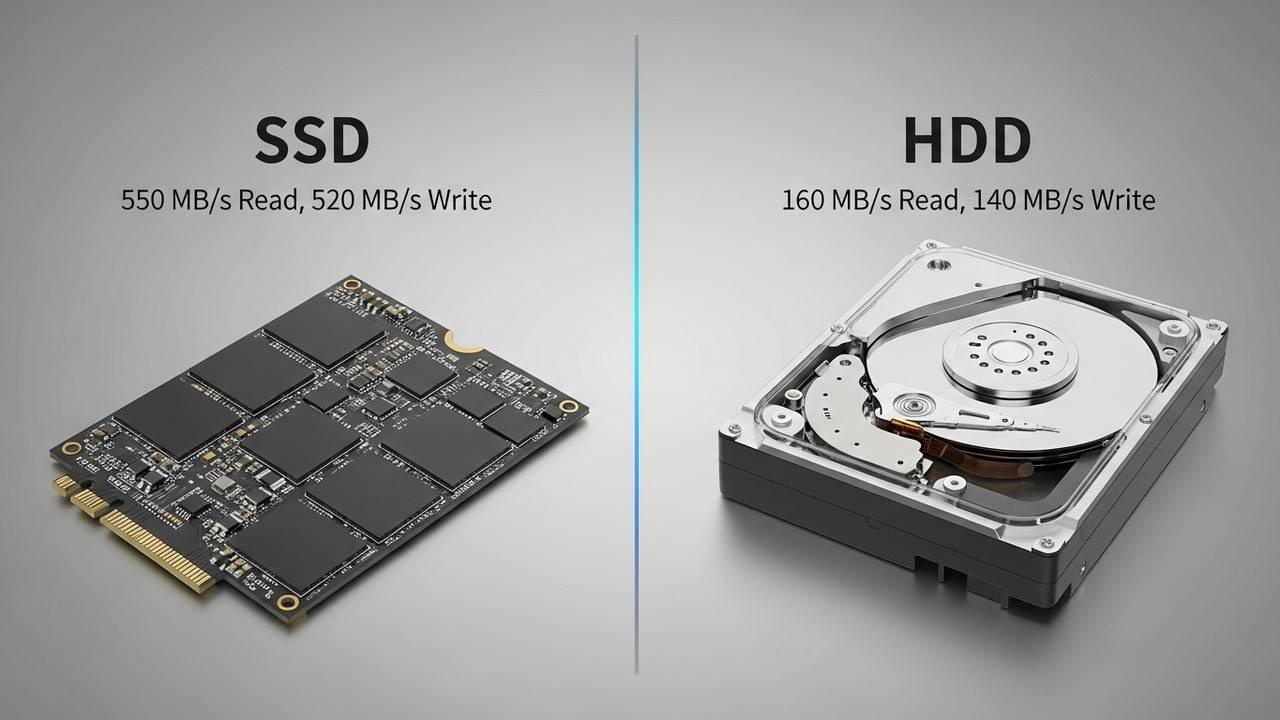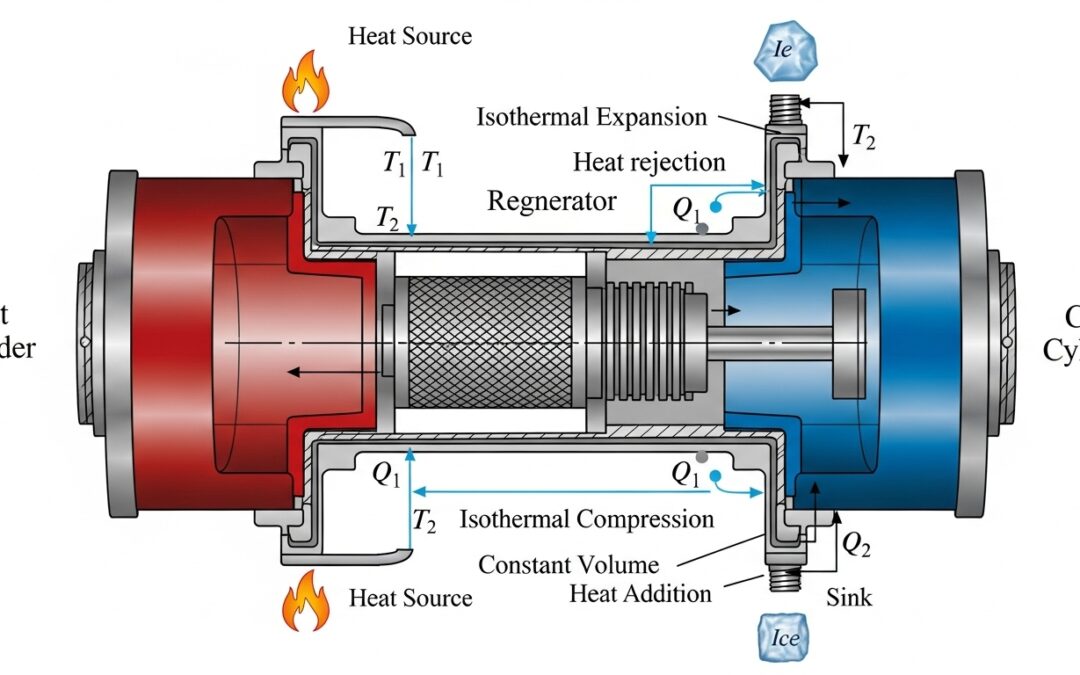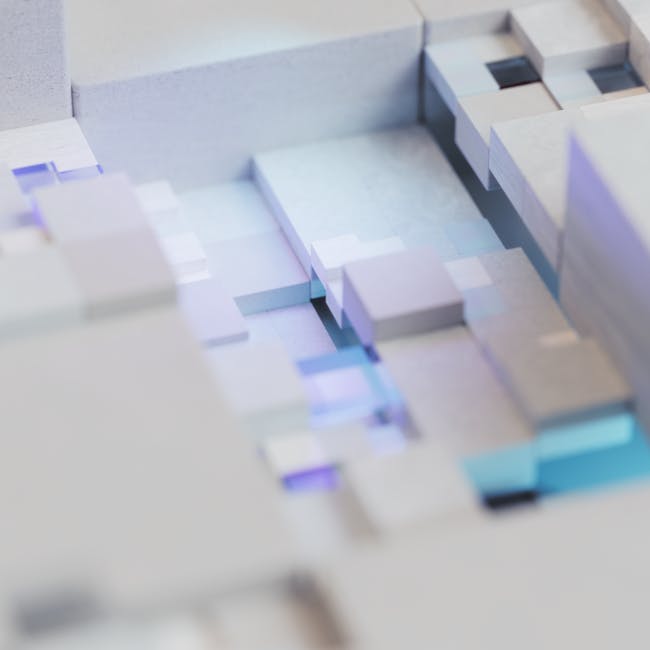Solid State Drives (SSDs) and Hard Disk Drives (HDDs) are the two main types of storage devices, each with unique characteristics. Choosing between them can significantly impact your computer’s performance and your overall user experience. This article will dive into the details of both, offering a clear comparison to help you make an informed decision about which storage solution is right for you. The distinction between SSDs and HDDs, and understanding the core differences is crucial.
Table of Contents
Read More
Deciphering the SSD: A Primer
To understand the distinction, it is crucial to first define an SSD. Solid State Drives are a type of storage device that uses flash memory to store data, differing fundamentally from the mechanical operation of traditional HDDs. They lack moving parts, a key factor contributing to their speed and durability. SSDs consist of a controller and flash memory chips, which work together to manage data storage and retrieval. The controller is responsible for tasks like wear leveling, bad block management, and garbage collection, ensuring the longevity and reliability of the drive. The flash memory itself is composed of cells that can store multiple bits of data, allowing for high storage capacities in a compact form factor. SSDs are available in various form factors, including 2.5-inch, M.2, and PCIe, catering to a wide range of devices from laptops to high-performance desktops.
How SSDs Store Data
The data storage mechanism in SSDs involves writing data to flash memory cells. Each cell can store one or more bits of data, with newer technologies like QLC (Quad-Level Cell) allowing for higher densities. When data is written, an electrical charge is applied to the flash memory cells, altering their state to represent the binary data. Reading data is accomplished by sensing the state of these cells. The controller manages the process of writing and reading data, ensuring that data is written to the correct locations and retrieved accurately. Flash memory is non-volatile, meaning that data is retained even when the power is turned off. This makes SSDs ideal for storing operating systems, applications, and user data that need to be preserved.
Advantages of SSD Technology
SSDs offer several advantages over HDDs. One of the most significant is speed. Because SSDs have no moving parts, they can access data much faster than HDDs. This results in significantly faster boot times, application loading times, and overall system responsiveness. SSDs are also more durable than HDDs, as they are less susceptible to damage from physical shocks and vibrations. The absence of moving parts reduces the risk of data loss due to mechanical failure. Furthermore, SSDs consume less power than HDDs, which can extend battery life in laptops. Their compact size and various form factors also make them suitable for a wide range of devices. However, SSDs are generally more expensive per gigabyte than HDDs, which can be a consideration for users with large storage needs. Despite this, the performance benefits often outweigh the cost for many users.
Demystifying the HDD: A Deep Dive
Hard Disk Drives (HDDs) represent the traditional approach to data storage, utilizing mechanical components to read and write data. They consist of spinning platters coated with a magnetic material, read/write heads that move across the platters, and a motor to spin the platters. Data is stored magnetically on the platters, and the read/write heads access the data by physically moving to the correct location on the platters. The mechanical nature of HDDs inherently introduces limitations in terms of speed and durability. However, HDDs have been a staple in computing for decades, offering cost-effective storage solutions, especially for large data capacities. Understanding the inner workings of HDDs is essential to appreciate the contrast with SSD technology. The evolution of HDDs has seen improvements in storage density and read/write speeds, but they still lag behind SSDs in many aspects.
The Mechanics of HDDs
HDDs store data on spinning platters, which are coated with a magnetic material. Data is written to these platters by the read/write heads, which change the magnetic orientation of the particles on the platter surface. The read/write heads move across the platters to access the data, a process that involves physical movement. The speed at which the platters spin, measured in revolutions per minute (RPM), significantly affects the data transfer rate. The faster the RPM, the quicker the data can be accessed. HDDs also include a controller, which manages the data storage and retrieval processes. This controller is responsible for tasks such as error correction and data formatting. HDDs are typically available in 3.5-inch and 2.5-inch form factors, with the former being common in desktop computers and the latter in laptops. The mechanical complexity of HDDs makes them more prone to failure than SSDs, particularly if subjected to physical shocks or vibrations.
The HDD’s Place in Modern Computing
Despite the advancements in SSD technology, HDDs continue to have a place in modern computing, primarily due to their cost-effectiveness for large storage capacities. HDDs are often used for storing large amounts of data that are not accessed frequently, such as media files, backups, and archives. Their lower cost per gigabyte makes them an attractive option for users who need a lot of storage space but do not require the speed benefits of an SSD. HDDs are also reliable for long-term data storage, provided they are handled with care and protected from physical damage. However, the slower access times and higher power consumption of HDDs make them less suitable for operating systems and frequently used applications. Many modern computer systems use a hybrid approach, combining an SSD for the operating system and frequently used applications with an HDD for bulk storage.
SSD vs HDD: A Comparative Analysis
The fundamental difference between an SSD and an HDD lies in their underlying technology. SSDs use flash memory, offering faster access times, greater durability, and lower power consumption. HDDs, on the other hand, rely on mechanical components, resulting in slower performance, higher power consumption, and greater susceptibility to physical damage. In terms of speed, SSDs can access data significantly faster than HDDs, leading to a more responsive computing experience. SSDs can achieve read and write speeds that are several times faster than those of HDDs. Durability is another key factor. SSDs are more resistant to physical shocks and vibrations, making them ideal for laptops and other portable devices. HDDs, with their moving parts, are more vulnerable to damage. The cost per gigabyte is generally higher for SSDs than for HDDs, but the performance benefits often justify the price for many users. Power consumption is also lower with SSDs, extending battery life in laptops. The choice between an SSD and an HDD depends on individual needs and priorities.
Key Differences Summarized
Key Takeaways
In conclusion, the choice between an SSD and an HDD hinges on the user’s specific requirements. SSDs offer superior performance, durability, and efficiency, making them ideal for operating systems, applications, and frequently accessed data. HDDs provide cost-effective storage for large amounts of data that do not require rapid access. The optimal solution for many users is a hybrid approach, combining an SSD for the operating system and essential applications with an HDD for bulk storage. The rapid evolution of storage technology continues to push the boundaries of performance and capacity, with SSDs leading the charge in terms of speed and efficiency. Understanding the advantages and disadvantages of each technology empowers users to make informed decisions that best suit their computing needs and budget.
| Feature | SSD (Solid State Drive) | HDD (Hard Disk Drive) |
|---|---|---|
| Technology | Flash memory (no moving parts) | Spinning platters and read/write heads |
| Speed | Significantly faster (faster boot times, application loading) | Slower |
| Durability | More durable (resistant to shocks and vibrations) | Less durable (prone to damage from shocks) |
| Cost | More expensive per gigabyte | Less expensive per gigabyte |
| Power Consumption | Lower | Higher |
| Noise | Silent | Can be noisy |
| Form Factors | 2.5-inch, M.2, PCIe | 3.5-inch, 2.5-inch |
We also Published
RESOURCES
- Is an HDD better than an SSD? : r/buildapc
- SSD vs HDD – Difference Between Data Storage Devices – AWS
- very new to this stuff, what’s the difference between SSD and HDD …
- Should I install Proxmox on SSD or HDD? | Proxmox Support Forum
- Azure Standard SSD vs HDD performance? : r/AZURE
- SSD vs. HDD: What’s the Difference? | PCMag
- SSD vs HDD! Should I bother installing it on SSD? : r/Ubuntu
- HDD or SSD for working drive? | Lightroom Queen Forums
- External SSD or HDD – General Discussion – TabloTV Community
- hard drive – Should I install my operating system on my SSD or HDD …






0 Comments